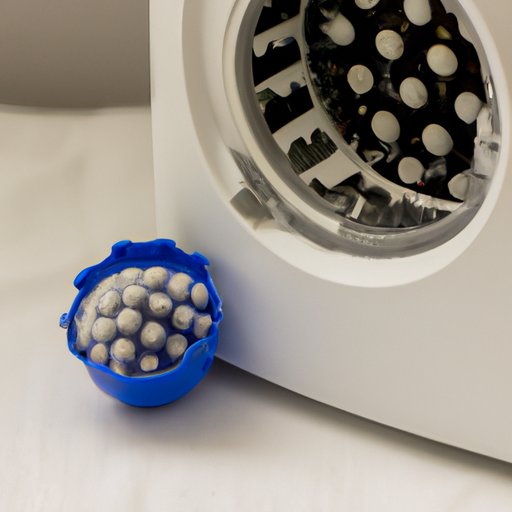Introduction
Lint is a type of small fibers from clothes that can accumulate in the dryer over time. It is made up of mostly cotton and synthetic fibers that come off clothes during the washing and drying process. These fibers can build up in the lint filter, dryer drum, and dryer vent, causing the dryer to be less efficient and even lead to fires. To keep your dryer running safely and efficiently, it is important to take steps to reduce the amount of lint in the dryer.

Clean the Lint Filter Regularly
The lint filter should be cleaned after every load of laundry. This helps to remove any lint that has built up on the filter. To clean the lint filter, first remove it from the dryer and shake out any lint that is stuck to it. Then use a vacuum cleaner with an attachment to remove any remaining lint. Finally, rinse the filter with warm water and let it air dry before putting it back in the dryer.

Remove Lint from the Dryer Drum
Lint can also build up inside the dryer drum. To remove this lint, turn off the power to the dryer and unplug it. Then use a vacuum cleaner with an attachment to remove any lint that is stuck to the walls or bottom of the drum. Once all the lint has been removed, wipe down the inside of the dryer with a damp cloth.
Vacuum the Dryer Vent
Lint can also accumulate in the dryer vent, which is the tube that connects the dryer to the wall. To remove this lint, first disconnect the dryer vent from the wall. Then use a vacuum cleaner with an attachment to remove any lint that is stuck to the vent. Finally, reconnect the vent and make sure that it is securely fastened.
Use High-Efficiency Detergents
High-efficiency (HE) detergents are specially formulated to reduce the amount of lint that is produced when clothes are washed. HE detergents are designed to break down more quickly in the wash, which reduces the amount of lint that is left behind on clothes. When selecting an HE detergent, look for one that is specifically labeled as “low sudsing” or “no sudsing” to ensure that it will not produce too much foam in the wash.
Separate Linty Items Before Drying
Certain items, such as towels, blankets, and sweatshirts, tend to produce more lint than other items. To reduce the amount of lint in the dryer, it is best to separate these items from other items before drying. This will help to prevent them from transferring lint onto other items in the dryer.
Use Dryer Balls
Dryer balls are a great way to reduce the amount of lint in the dryer. They are made of plastic or rubber and have small spikes on them that help to break up clumps of lint. Dryer balls also help to reduce static cling and soften clothes. When selecting dryer balls, look for ones that are specifically designed for reducing lint.

Try a Dryer Lint Trap
A dryer lint trap is a device that is installed in the dryer vent and collects lint before it reaches the outside of the house. The lint trap should be cleaned regularly to ensure that it is working properly. To install a lint trap, first disconnect the dryer vent from the wall. Then insert the lint trap into the vent and secure it with screws. Finally, reconnect the vent and make sure that it is securely fastened.
Conclusion
Reducing the amount of lint in the dryer is an important step in keeping your dryer running safely and efficiently. By following the steps outlined above, you can help to minimize the amount of lint in your dryer. Cleaning the lint filter regularly, removing lint from the dryer drum, vacuuming the dryer vent, using high-efficiency detergents, separating linty items before drying, using dryer balls, and trying a dryer lint trap are all effective ways to reduce lint in the dryer. Further research into the most effective methods for reducing lint in the dryer is recommended.


